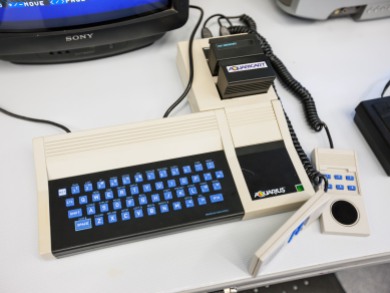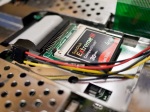I travelled up to the VCF-GB today at the Silicon Dreams event at Snibston Discovery Museum and took the opportunity to capture a few pictures. It was pretty quiet being a weekday but I suspect it will be somewhat busier over the weekend.
I arrived pretty early and a number of exhibitors were still setting up. AmigaKit, Amiga North Thames and A-EON were not present when I was there although I did get to see Morph OS running on a Mac Mini G4, demonstrated by a very helpful and enthusiastic Ravi Abbott. I happen to have a Mac Mini G4 and will have a play with Morph OS later.
The BBC classroom was all set up and running, a most peculiar experience to see such a set up again. Had my previous Retrochallenge not revolved around programming the BBC I probably would have taken the opportunity to have a play.
In various rooms around the museum there were rows and rows of computers and consoles set up ready to be played with and I took full advantage. I felt my age when I witnessed a young lad trying to insert a 3.5″ floppy disk the wrong way round, seemingly completely unfamiliar with the technology.
I spoke at length to Dylan Smith of Spectranet fame who has developed the ZX Spectrum ethernet adapter utilising the WIZnet 5100 chip. I not only admired the finished product but Dylan’s extraordinary soldering skills on the prototypes. I also saw a working Harlequin board which was very cool.
I missed the IBM SYSTEM/360 Recreation which was pretty disappointing, not sure if they simply hadn’t set it up but I was really looking forward to that. I would also liked to have seen more equipment from the 60’s and 70’s.
Here are some pictures and video, as you can see it was very quiet on Friday morning so little opportunity to capture visitors interacting with the exhibits. If possible I may travel back up on Sunday to see if some of the missing exhibits have appeared.




































